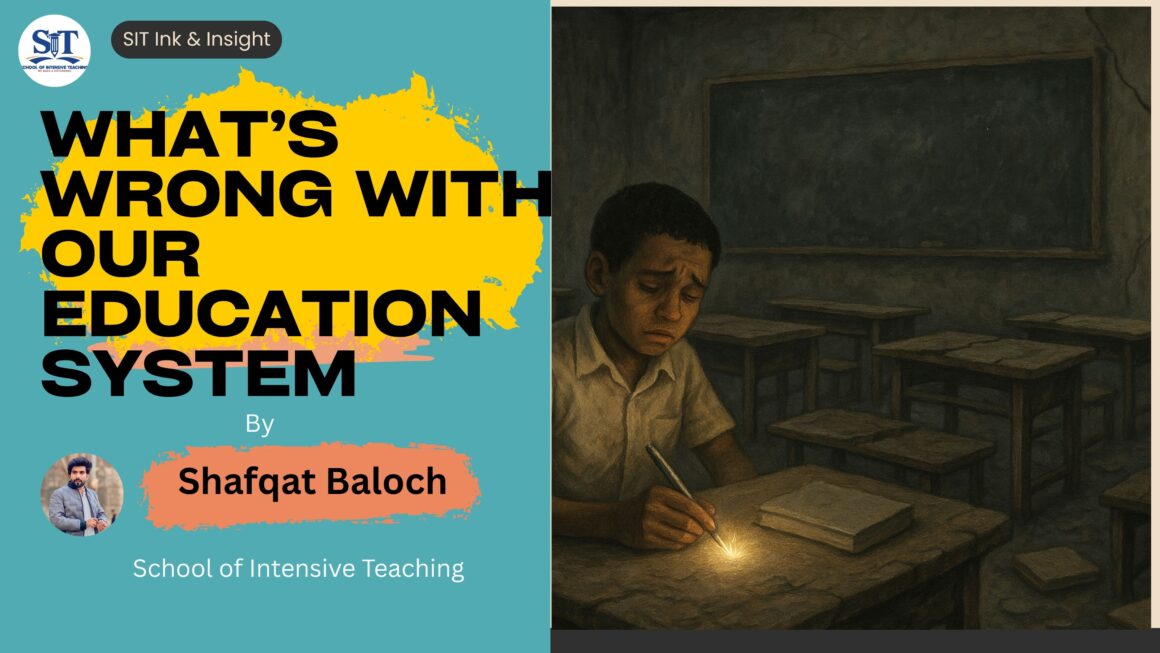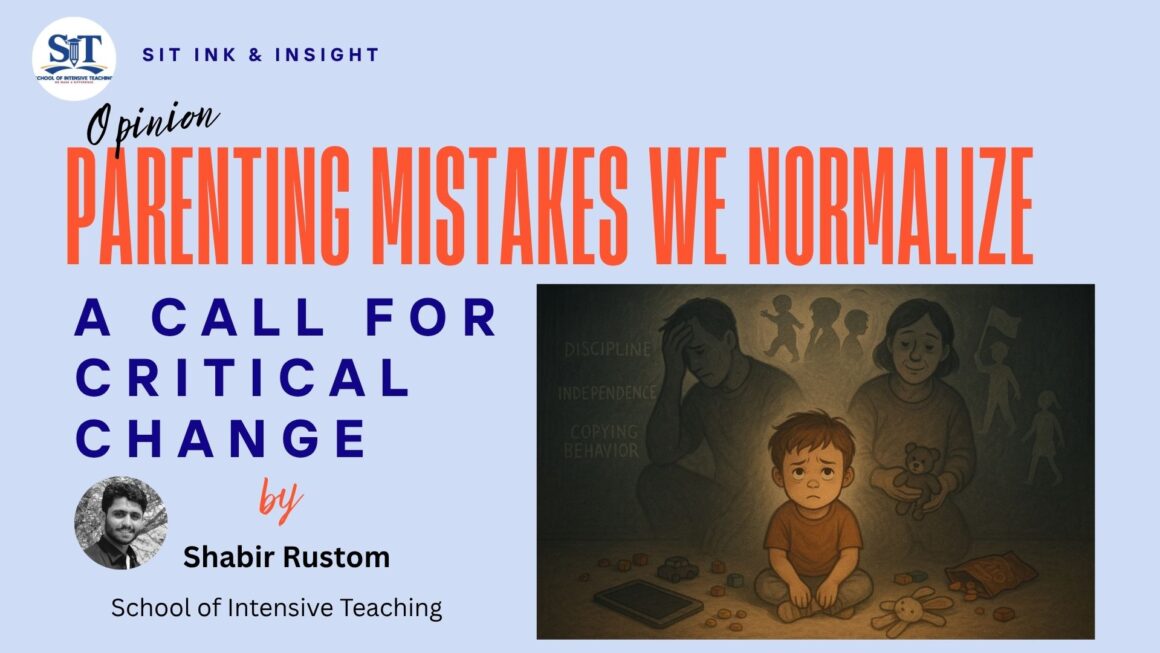By Shay Noman
Artificial intelligence, has become a pivotal topic in contemporary discussions. Its remarkable advancements have left us questioning whether it’s the key to solving some of humanity’s greatest challenges or a potential threat to our existence. In this exploration, and based on my thorough research, it’s clear that artificial intelligence is a significant force for the betterment of humanity, offering substantial potential to address our complex challenges and lead us to a brighter future. In countless instances, the realm of popular culture, particularly exemplified by iconic films such as ‘The Terminator, Blade Runner, The Matrix series and many more have recurrently portrayed artificial intelligence as a formidable and existential threat, casting it in the role of a malevolent force capable of unleashing cataclysmic consequences upon humanity, thereby fostering a collective apprehension regarding the potential perils entailed by the relentless advancement of AI technologies.
From optimizing efficiency and productivity in industries to revolutionizing healthcare, education, and environmental sustainability, AI’s contributions are profound.
Its impact on society, economy, healthcare, education, and various other domains is undeniable. AI, as a tool for betterment, has not only streamlined operations but has also demonstrated its potential to enhance human life in profound ways. This essay explores the multifaceted contributions of AI to the betterment of humanity, highlighting its transformative power and potential for the future. The diverse domains in which artificial intelligence has made substantive contributions are comprehensively addressed below.
Enhancing Efficiency and Productivity :
One of the most palpable ways AI has benefited humanity is through enhanced efficiency and productivity. Across industries, AI-driven automation and optimization have led to more streamlined processes and significant cost savings. For example, in manufacturing, AI-powered robots and machines are capable of working around the clock with precision and consistency, increasing productivity and product quality. In the realm of customer service, chatbots and virtual assistants powered by AI are available 24/7, responding to inquiries and resolving issues promptly, improving customer satisfaction. According to a report by Reuters, official statements have shed light on Amazon\’s ambitious foray into the realm of literary creation, signifying a monumental shift in the world of publishing and the profound implications of Artificial Intelligence (AI) technology.
“In manufacturing, AI-powered robots and machines are capable of working around the clock with precision and consistency, increasing productivity and product quality.”
The e-commerce giant has unveiled plans to employ advanced AI algorithms and chatbot systems as a means to craft entire books, a move that could potentially revolutionize the traditional authorship and publishing paradigm. By harnessing the computational prowess of AI, Amazon seeks to automate the creative process of writing and subsequently offer these AI-generated literary works on its official platform. This pioneering endeavour hints at the convergence of technology and literature, a convergence that prompts contemplation on the impact of automation on creativity, intellectual property rights, and the very nature of human ingenuity. It raises thought-provoking questions regarding the ethical, legal, and artistic dimensions of AI-assisted authorship, where algorithms coalesce with linguistic finesse, challenging established norms of what it means to be an author and how we perceive the literary arts. The melding of AI and literature, as contemplated by Amazon, symbolizes a frontier of innovation that portends shifts not only in the publishing industry but also in the essence of human expression and the boundaries of creativity.
Healthcare Advancements
Furthermore, AI’s imprint on healthcare is conspicuously etched in the arena of drug discovery, a traditionally laborious and time-consuming endeavour. Perhaps one of the most resounding hallmarks of AI’s influence on healthcare is its capacity to fashion personalized treatment plans. Through intricate analysis of an individual’s medical history, genetic makeup, and lifestyle factors, AI can elucidate a precise and tailored approach to therapy. This personalization resonates with the broader shift toward precision medicine, wherein treatments and interventions are bespoke to each patient’s unique circumstances. AI, with its adeptness in processing and interpreting the intricate interplay of variables, paves the way for healthcare practices that are not only more effective but also potentially less invasive, reducing side effects and enhancing patient well-being.
AI’s computational prowess with medical science’s unceasing pursuit of improved healthcare promises to not only enhance patient outcomes but also reshape the future landscape of medicine itself.
AI’s ascension in the medical domain is nothing short of transformative, redefining the contours of diagnosis, drug discovery, and patient care. The confluence of AI’s computational prowess with medical science’s unceasing pursuit of improved healthcare promises to not only enhance patient outcomes but also reshape the future landscape of medicine itself. Nonetheless, it is essential to tread this path with a judicious balance, mindful of the ethical, privacy, and regulatory considerations that accompany such technological progress. According to the report of “NIH”, A recent development of significant technological import, the Cambridge Medical Robotics Surgical (CMR) system, an exemplar of advanced robotic surgical technology hailing from the United Kingdom, has been successfully implemented and is now fully operational at the esteemed Sindh Institute of Urology and Transplantation (SIUT) in Karachi. Remarkably, it has been disclosed that over a century’s worth of intricate surgical cases have already been meticulously conducted with the adept utilization of this cutting-edge robotic system, underscoring its burgeoning impact on the realm of modern medical intervention.
Simultaneously, in an independent manifestation of the accelerating global adoption of robotic-assisted surgery, the National Hospital and Medical Centre, a distinguished private medical institution located in Lahore, has reported a total of 13 ground breaking robotic surgical procedures within its hallowed confines. This conspicuous and ever-expanding use of robotic surgical technology underscores its burgeoning prominence in the realm of contemporary medical practice, holding the potential to revolutionize the landscape of surgical methodologies and patient care.
Personalized Experiences
Illustrative of this transformative prowess is the deployment of recommendation algorithms, the digital alchemy that fuels the engines of renowned streaming platforms like Netflix and sonorous havens like Spotify. The orchestration of these algorithms, underpinned by AI’s intellectual pantheon, undertakes the formidable task of ingesting, digesting, and deciphering the extensive compendium of an individual’s viewing or listening history, each data point serving as an intricate brushstroke in the masterpiece of one’s digital identity. The intricate synthesis of these data streams is, in itself, an intricate and constantly evolving tapestry, a complex web of choices, preferences, and, dare one say, inklings of desire.
The quintessence of this intricate orchestration lies in the revelation that, through this harmonious convergence of data points and algorithmic ingenuity, AI has bestowed upon us, the discerning users of these digital realms, the in estimable gift of serendipity – the delightful sensation of uncovering a hidden gem or traversing an uncharted avenue of content that, had it not been for AI’s elegant choreography, would have remained veiled in the obscurity of the digital abyss. In such serendipitous moments, our experiences transcend the mundane and traverse the sublime, ushering us into a realm of unbounded delight, where the confluence of art and science conspires to amplify the profundity of our modern existence.
his technological symphony has transformed the mundane into the extraordinary, transmuting the digital landscape into a theatre of serendipity and delight.
These personalized experiences, meticulously sculpted and artfully woven by AI, not only transcend the realm of mere convenience but also venture into the hallowed corridors of emotional resonance. They manifest as digital companions, whispering the secrets of our latent curiosities and delivering the music of our hearts’ desires. The interplay between AI’s algorithmic prowess and our sensory receptors bestows upon us an invaluable treasure trove, where the ineffable harmony of art and science unifies to craft experiences that are not only tailored but profoundly empathetic. The realm of modernity stands, thus, as an arena where the subtle algorithms of AI to decipher the poetry of human to symphony our souls into a resonant and personalized chorus. The role of AI in sculpting personalized experiences is nothing short of a technological marvel, where the divine weave of data and algorithm, underpinned by the intelligent machinations of artificial intelligence, has rendered the pedestrian art of recommendation into a profound and intricate exploration of the human psyche. This technological symphony has transformed the mundane into the extraordinary, transmuting the digital landscape into a theatre of serendipity and delight, where AI, as the unerring maestro, orchestrates experiences that not only satisfy our needs but elevate them to the echelons of sublime resonance in the grand tapestry of modern existence.
Transforming Education
Meanwhile, in the realm of education, AI-powered learning platforms constitute an educational paradigm shift of momentous proportions. These platforms are devised to intelligently adapt to the specific needs, aptitudes, and cognitive paces of individual students, thereby delivering an educational experience that is profoundly personalized. The foundational principle underpinning this innovation is the augmentation of pedagogical efficacy through an unprecedented degree of tailored instruction. In the conventional educational model, students are typically expected to conform to a standardized pace, curricula, and assessment regimen, which, unavoidably, can lead to suboptimal learning outcomes for many individuals. AI-driven educational platforms, by contrast, endeavour to transcend these limitations by dynamically adapting the educational content and progression to each student’s unique requirements. This results in a more optimized and engaging learning process that is not bound by the constraints of one-size-fits-all pedagogy.
At its core, this transformation is driven by the introduction of innovative tools and methodologies that have decisively enhanced the entire process of learning.
Furthermore, these AI-driven educational platforms are endowed with a capacity for continuous assessment, allowing for real-time evaluation of students’ comprehension and competence. This has the profound advantage of promptly identifying areas where a student might be struggling and thereby affording timely interventions and targeted support. Conversely, for students who display exceptional aptitude in a particular subject, AI can expedite their progress by providing more advanced materials and challenges, ensuring they are not held back by the constraints of a traditional, uniform curriculum. The overall effect is a shift away from the rigidity of the past, replaced with a flexible, responsive, and adaptable educational framework. Artificial Intelligence (AI) has undertaken a sweeping and profound revolution in the field of education, signifying a seismic shift that transcends mere technological advancement. At its core, this transformation is driven by the introduction of innovative tools and methodologies that have decisively enhanced the entire process of learning.
In the crucible of real-time interactions, these AI-driven tutors meticulously discern areas of challenge or uncertainty that a student may be grappling with. Through the multifaceted analysis of student responses, behavioural patterns, and cognitive processes, these systems unveil the precise junctures at which a student encounters difficulties. This prescient awareness of a student’s struggles opens a veritable Pandora’s box of pedagogical possibilities, as AI is primed to provide tailored and incisive explanations and exercises that are intricately tailored to the precise areas of need.
Furthermore, the AI-driven educational paradigm has set a definitive course toward adaptability and optimization. The traditional model of education, underpinned by fixed curricula and homogenized approaches, often leads to a dissonance between the pace of instruction and the diverse spectrum of learners’ cognitive rhythms. In stark contrast, intelligent tutoring systems demonstrate a fluid, malleable, and highly adaptable approach. This flexibility is underpinned by AI’s capacity to dynamically modify the educational content, thereby ensuring that it aligns seamlessly with a student’s unique learning curve.
Through ongoing assessments and iterative feedback, these systems maintain a perpetual vigilance over a student’s progress. In instances where a student exhibits a profound grasp of a subject, AI can expedite their journey by introducing advanced materials, challenges, and projects, catalysing intellectual growth without the hindrance of uniformity. Conversely, for those learners who face challenges, AI can provide a nurturing and patient scaffold, replete with tailored explanations and exercises that are perfectly calibrated to ameliorate their areas of difficulty. This adaptable approach not only empowers students to progress at their own pace but also infuses a sense of autonomy and control over their educational voyage.
Japan, a nation renowned for its unwavering commitment to technological innovation and educational excellence, has embarked on a visionary journey to harness the transformative potential of artificial intelligence (AI) within its hallowed educational system. As per a report from the esteemed source, “Japan todays” beacon of reliable journalism and insight, Japan has taken a monumental stride by officially promulgating a set of comprehensive guidelines that paves the way for the judicious and measured integration of AI technologies into the very fabric of its schools. This momentous development epitomizes Japan’s steadfast dedication to not merely embracing technological advancements but orchestrating a harmonious synergy between cutting-edge AI capabilities and the hallowed halls of academia, thereby ushering in an era of education reimagined through the lens of innovation and digital intelligence.
Furthermore, the elucidation of these guidelines sends a resounding message to the global educational community, beckoning them to join Japan in this bold endeavour to embrace AI. The action taken by Japan, with the meticulous publication of these guidelines, underscores the importance of a carefully considered approach, where technology is not wielded as a panacea but as a tool of empowerment. It is a blueprint that encourages other nations to undertake similar journeys, understanding that the marriage of AI and education is not a wholesale replacement but a harmonious symphony of human ingenuity and digital assistance.
What Japan envisions is a future where educators are equipped with tools that enable them to unlock the full potential of each student. These guidelines pave the way for AI to assist in the individualized tracking of student progress, offering valuable insights that can guide educators in tailoring their teaching methods to suit the unique needs of every learner. Moreover, AI can serve as a bridge, connecting students with a wealth of digital resources, expanding the horizons of knowledge and facilitating the cultivation of critical thinking skills.
However, it is paramount to underscore that the implementation of AI in education does not come without its own set of challenges and ethical considerations. The responsible and ethical use of AI in educational settings, as emphasized by the Japanese guidelines, necessitates a vigilant focus on data security, privacy, and transparency. These are the pillars upon which trust in AI-enhanced education is built, ensuring that student data is handled with the utmost care and sensitivity, and that AI algorithms do not inadvertently perpetuate biases.
Environmental Sustainability
AI is playing a pivotal role in addressing environmental challenges. In the field of energy, AI algorithms can optimize energy consumption in buildings, factories, and transportation systems. Predictive maintenance powered by AI can help reduce energy waste and extend the lifespan of equipment.
Furthermore, AI is being used to manage and analyse large datasets related to climate change. It can process vast amounts of information, helping scientists better understand climate patterns and formulate strategies for mitigating environmental risks. AI is also critical in the development of clean energy technologies, such as more efficient solar panels and energy storage systems.
Advancements in Research and Exploration
AI has significantly accelerated scientific research and exploration. For example, in astrophysics, AI algorithms are helping to analyse massive sets of astronomical data, identifying celestial phenomena and objects that were previously undetectable. According to a recent report by India Today, the pivotal role of data analysis and precise calculations in ensuring the success of missions stands out as an emblematic example of the transformative potential of artificial intelligence (AI) in the realm of space exploration. This underscores a notable shift from earlier missions undertaken by the Indian Space Research Organisation (ISRO), where the absence of AI-driven technologies resulted in certain missions facing setbacks and failures. The dichotomy between past missions, devoid of AI integration, and recent missions that leveraged the power of data analytics and AI-driven calculations is emblematic of the seismic shift in the aerospace industry\’s approach to mission planning and execution. This transformation showcases how AI has not only enhanced the probability of mission success but has also substantially reduced the margin of error, thereby catapulting space exploration endeavours to new heights of efficiency and precision.
With AI at the helm, the spacecraft could autonomously correct its trajectory and avert a potentially catastrophic crash during the landing phase.
In the context of space missions, data analysis and mathematical calculations have always held paramount importance. However, the infusion of AI has revolutionized these processes. It allows for the processing of copious amounts of data in real-time, swiftly identifying critical trends and anomalies. AI algorithms can also predict potential issues, enabling mission controllers to take proactive measures, mitigating risks and optimizing decision-making during the course of the mission.
One poignant example is the Chandrayaan-2 mission, where AI-driven navigation and landing systems played a pivotal role. With AI at the helm, the spacecraft could autonomously correct its trajectory and avert a potentially catastrophic crash during the landing phase. This mission highlighted the indispensable role AI played in ensuring the success of a complex lunar exploration endeavour.
In essence, the amalgamation of AI into space missions has emerged as a transformative force, bestowing upon space agencies such as ISRO the means to optimize mission planning, execution, and troubleshooting. This has significant implications not only for India but for the global space community, as it underscores the imperative need to harness the capabilities of AI in addressing the ever-evolving challenges of space exploration.
The incorporation of AI, data analysis, and precise calculations has ushered in a new era where space missions are not merely dependent on the manual prowess of human operators but are elevated by the computational prowess of AI. It is no longer just a matter of sending objects into space but ensuring that they navigate, collect data, and return with precision and efficiency. This paradigm shift undoubtedly cements the significance of AI in space exploration and positions it as a catalyst for a future marked by more successful and awe-inspiring missions that push the boundaries of human knowledge and scientific achievement.
AI and Entertainment Industry
Indeed, the advancement of AI in recent years has been nothing short of extraordinary, ushering in a new era where machines are increasingly capable of creative tasks that were once solely within the domain of human intelligence. Remarkable AI software like “Mid_Journey” has emerged as a testament to this progress, offering the ability to generate intricate images, logos, and even entire pieces of music with remarkable ease and speed.
The capabilities of AI software like “Mid_Journey” underscore the transformative power of artificial intelligence in the creative realm. For instance, the generation of images and logos has been streamlined to a point where intricate designs can be conjured in mere seconds. This not only revolutionizes the graphic design industry but also empowers businesses and individuals to access professional-quality branding assets with unprecedented convenience.
Furthermore, the fusion of AI and music creation, as exemplified by the concept of requesting a specific rendition of a song like “Bella Ciao” played solely on a guitar through the use of a tool like “Stable Delusion,” represents a ground-breaking leap in creative AI applications. Users can now express their musical preferences and, within moments, witness AI’s prowess in composing, arranging, and performing music in a highly customized fashion. This has immense implications for music production, allowing for rapid prototyping and experimentation, and may even inspire new forms of artistic expression.
In a striking testament to the evolving landscape of cinematic production, Marvel Studios, an industry titan renowned for its iconic superhero franchises, has ventured into the realm of artificial intelligence (AI) to craft the introductory sequences of their latest web series, “The Secret Invasion.” This ground-breaking move underscores not only the innovative utilization of AI in the entertainment industry but also the tangible transformative power of machine learning and computer vision technologies. By harnessing the capabilities of AI, Marvel Studios endeavours to deliver a visual experience that is not only captivating but also emblematic of the creative possibilities that lie at the intersection of art and advanced technology.
The use of AI in the entertainment industry is not limited to enhancing the visual elements but also extends to the creative process itself. AI-driven tools can generate plot ideas, character development, and even dialogue suggestions, offering a new dimension of storytelling that blurs the line between human ingenuity and machine-driven innovation.
AI’s involvement in crafting the introductory sequences of “The Secret Invasion” does not merely amount to a technical feat but also underscores the potential of AI to redefine the future of entertainment. By leveraging machine learning algorithms, Marvel Studios can curate content that resonates with their audience on a deeper level. AI enables the studio to sift through troves of historical data, discern audience preferences, and tailor the visual elements to create a more engaging and immersive experience, ultimately transcending the boundaries of traditional storytelling and offering a glimpse into the future of content creation.
This innovative leap raises important questions regarding the symbiotic relationship between AI and creativity. The use of AI in the entertainment industry is not limited to enhancing the visual elements but also extends to the creative process itself. AI-driven tools can generate plot ideas, character development, and even dialogue suggestions, offering a new dimension of storytelling that blurs the line between human ingenuity and machine-driven innovation. The union of human creativity and AI-powered tools opens the door to a realm of storytelling possibilities that is both exciting and ethically complex.
On the other hand, the concept of AI as a “job category killer” is a testament to its capacity for not only supplanting existing job functions but also redefining the very nature of work itself. In essence, AI catalysis a paradigm shift in the global workforce, necessitating adaptation and evolution on the part of individuals, industries, and nations. It is important to note that these 85 million jobs that AI may displace are predominantly in roles that involve routine, repetitive tasks, which are well-suited for automation. This displacement, therefore, has the potential to liberate human workers from mundane, monotonous activities, allowing them to focus on more creative, cognitive, and value-added tasks.
Furthermore, the creation of 97 million new jobs signifies the diverse and multifaceted applications of AI across various sectors. AI\’s emergence as a job category disruptor extends to fields as diverse as data analysis, cybersecurity, AI system development, and ethics consulting, underscoring its potential to stimulate economic growth and innovation. The jobs of the future, spawned by AI, demand not only technical skills but also critical thinking, adaptability, and a capacity for interdisciplinary collaboration. In this context, AI serves as a catalyst for upskilling and reskilling, which is essential in equipping the workforce with the competencies necessary to thrive in this new era.
These contributions, which I mentioned with proves, is showcasing AI’s transformative potential, often work quietly in the background, enriching our daily lives without much fanfare. They weave progress into our routines, such as the personalized algorithms that improve our digital experiences or the streamlined logistics that speed up deliveries, even if we don’t always notice the intricate ways they make our lives easier.
Conclusion
In closing, the evolution and integration of artificial intelligence into our lives have undeniably ushered in a new era of possibilities and transformation. It is evident that AI holds tremendous potential to enhance our existence in myriad ways. From optimizing efficiency and productivity in industries to revolutionizing healthcare, education, and environmental sustainability, AI\’s contributions are profound.
However, this remarkable technological advancement also presents ethical and regulatory challenges. As AI continues to evolve, we must tread carefully to ensure its benefits are maximized while minimizing risks. The convergence of technology and literature, as exemplified by Amazon’s foray into AI-assisted authorship, and the optimization of logistics and supply chain management are just glimpses of the vast potential of AI in shaping our world.
The future of AI is brimming with promise, but it is incumbent upon us to embrace it with ethical considerations, robust regulatory frameworks, and a commitment to responsible development. The path forward involves a delicate balance between innovation and ethical safeguards, where AI can truly be a force for the betterment of humanity, propelling us into a brighter, more inclusive, and sustainable future. As stewards of this remarkable technology, we hold the power to shape its trajectory for the collective benefit of society.
About the Author:













